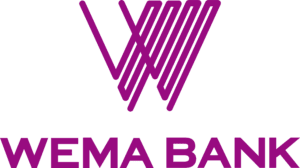Nigeria remittance inflow tops sub-Saharan Africa by $20.52bn
According to the latest Migration and Development Brief released by the World Bank, Nigeria accounted for a significant portion of remittance flows to the Sub-Saharan Africa (SSA) region in 2023.
Out of the $54 billion remittance flows, Nigeria received $20.52 billion, which is about 38 percent of the total amount. This is a 2 percent increase compared to the figures from 2022.
The report highlights that remittance flows to the SSA region are expected to have grown by approximately 1.9 percent in 2023. This growth can be attributed to the strong increase in remittances to countries like Mozambique (48.5 percent), Rwanda (16.8 percent), and Ethiopia (16 percent).
In addition to Nigeria’s growth in remittances, other major recipients such as Ghana and Kenya also experienced estimated gains. Ghana saw a 5.6 percent increase, while Kenya had a 3.8 percent increase in remittance flows.
These figures demonstrate the significant role that remittances play in the economic development of countries in the SSA region. The money sent by migrants living abroad contributes to the livelihoods of families and communities, as well as to the overall economic growth of these nations.
It’s encouraging to see the positive impact of remittances on Nigeria and other countries in the region. This news highlights the importance of supporting policies and initiatives that facilitate and enhance remittance flows, ultimately benefiting the economies and people of these nations.
The report warned that fixed exchange rates and capital controls are diverting remittances to the region from official to unofficial channels.
This echoed what was said by the former acting Governor of the Central Bank of Nigeria (CBN) who lamented in August that a lot of diaspora remittances arrived in Nigeria in Dollars and ended up in the parallel market without being officially documented.
“With those remittances, the dollars have come in, we know the dollars have come in but we don’t see them in the official system. So, they must be going somewhere and somewhere. The challenge with the black market, unofficial market or parallel market, or whatever name you want to call it, is that it is not regulated, and it becomes an easy place to have criminal activities.
“Some of the funding in the black markets is actually from diaspora remittances. That’s why it’s important we need to know a lot of what’s going on there,” he added.
In 2024, remittance flows to the SSA region are projected to increase by 2.5 per cent. Driving the moderated forecast are slowing economic growth and the prospect of weaker job markets in several high-income countries.
Additional downside risks include volatile oil prices and currency exchange rates, and a deeper-than-expected economic downturn in high-income countries.
The report also lamented that remittance costs remain persistently high, costing 6.2 percent on average to send $200 as of the second quarter of 2023. For the region, it would cost 7.9 percent on average.
By region, remittance inflows grew for Latin America and the Caribbean (8 percent), South Asia (7.2 percent), East Asia and the Pacific (3 percent), and Sub-Saharan Africa (1.9 percent).
Flows to the Middle East and North Africa fell for the second year, declining by 5.3 percent mainly due to a sharp drop in flows to Egypt. Remittances to Europe and Central Asia also fell by 1.4 percent after gaining more than 18 percent in 2022.
The United States continued to be the largest source of remittances. The top five remittance recipient countries in 2023 are India ($125 billion), Mexico ($67 billion), China ($50 billion), the Philippines ($40 billion), and Egypt ($24 billion).
Economies where remittance inflows represent substantial shares of gross domestic product (GDP) – highlighting the importance of remittances for funding current account and fiscal shortfalls – are Tajikistan (48 percent), Tonga (41 percent), Samoa (32 percent), Lebanon (28 percent), and Nicaragua (27 percent).




